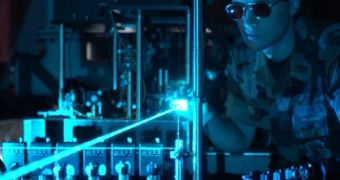Learning how to handle photons, and how to stack them on top of each other is an ability that is absolutely essential for the field of quantum computing and communication. However, playing with photons is an enormously complicated feat, for the simple reason that these elementary particles disappear if they hit anything. They exist only while traveling at incredible speeds, so physicists need to learn how to deal with them accordingly. Scientists at the University of Calgary announce that they have been able to do just that, stacking two photons atop each other using quantum entanglement.
This essentially allowed the team to construct various quantum states of light, in any architecture they saw fit. Details of the achievement were published online, in the February 14 online issue of the respected scientific journal Nature Photonics. The paper is entitled “Quantum-optical state engineering up to the two-photon level.” The achievement is expected to spawn technologies that will allow us to approach this field in entirely new ways, experts say. “This ability to prepare or control complex quantum objects is considered the holy grail of quantum science. It brings us closer to the onset of the new era of quantum information technology,” UC PhD physics student Andrew MacRae explains. He is also the coauthor of the new journal entry.
“Light is a particularly interesting quantum object, because it's an excellent communication tool. No matter what future quantum computers will be made of, they'll talk to each other using photons,” UC Department of Physics and Astronomy Professor Alexander Lvovsky, the author of the paper, adds. The new constructs were obtained inside special crystals, the team reports, by focusing beams of light onto them using lasers and mirrors. What the crystal does is basically convert high-energy, blue photons into quantum-entangled pairs of lower energy, red photons, the UC group says.
“Quantum light is like an ocean, and it's full of mysteries and treasures. Our task is to conquer it. But so far, physicists were able to control only a tiny island in this ocean. What we have done is to make this island bigger,” Lvovsky adds. He explains that quantum entanglement is a property that allows for two elementary particles to communicate instantly over space. In such a system, measurements conducted on one of the components are immediately reflected on the other, in a correlation that Albert Einstein called a “spooky action at a distance,” e! Science News reports.

 14 DAY TRIAL //
14 DAY TRIAL //